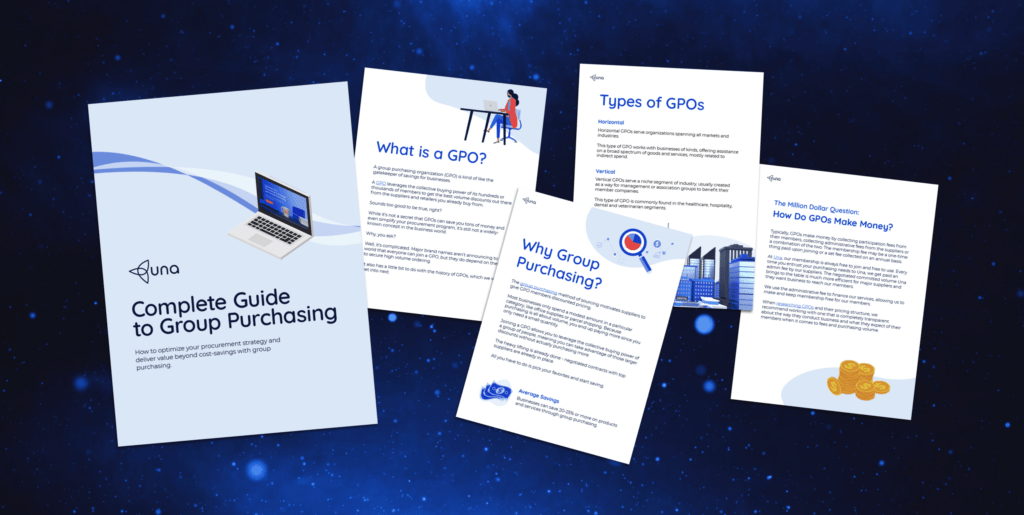How to Simplify the RFP Process to Free Up Procurement's Time
By Cindy Rittel | October 13, 2020
Have you ever thought about all the amazing and fulfilling things you could be doing if you didn’t have to dedicate hours of your time to “life admin?”
Instead of picking up groceries for the week, you could enjoy a long, leisurely lunch with a friend.
Rather than sorting out your taxes, you could finally get around to finishing the novel you’ve been working on for the past five years.
The timeslots you would typically spend washing up, commuting, or taking out the trash suddenly become windows of opportunity. You could volunteer for a charity, sign up for an art class and spend more meaningful time with your family and friends. As a result, you’d probably feel much happier and more fulfilled in life.
For procurement professionals, the notion of not having to spend their working days producing lengthy RFPs might evoke similarly joyous thoughts.
How can procurement cut back on RFPs?
In reality, most of us don’t have the luxury of being able to abandon the monotonous and less rewarding aspects of our daily lives.
But, with the help of a Group Purchasing Organization (GPO), procurement professionals could significantly reduce the number of RFPs they produce.
The request for proposal process is renowned for being lengthy, time-consuming, and costly. Not to mention, it won’t actually guarantee access to top suppliers. The best vendors will receive enough business without needing to respond to RFPs.
GPOs allow procurement teams the luxury of outsourcing certain categories, which greatly reduces the number of RFPs they send out. Purchasing via a GPO means that the heavy lifting, such as supplier contract negotiations, is already done.
The truth is, highly-skilled and driven procurement professionals are capable of so much more than managing the request for proposal process for their organization. Here are six ways Sourcing Heroes could occupy their new-found time in a post (or at least heavily reduced) RFP world.
1. Elevate procurement’s position within the business
A reduction in the amount of time procurement professionals spend performing manual and repetitive tasks will heavily influence how the function is perceived by the business at large.
There will be more opportunities to work closely and collaboratively with different business stakeholders, addressing the organization’s needs and long-term goals. This will ultimately prove procurement’s value as a strategic business partner.
2. Nurture more meaningful supplier relationships
Every procurement professional wishes they had more time to give to supplier relationship management. This is especially true at a time when organizations around the world are facing major disruptions, whether it’s natural disasters, political instability, or global pandemics.
Because supply chain unpredictability is such a major concern, it’s more important than ever before to nurture long-term, meaningful supplier relationships that build trust, establish loyalty, and ensure the highest quality of service.
With extra time on their hands, procurement professionals can give greater attention to consolidating supplier lists and establishing preferred supplier programs. Both will enable them to focus on developing the relationships that really matter.
3. Invest time and money in sustainable procurement
Sustainability has become a business priority in recent years, but that’s not to say professionals consistently give ethical and sustainable procurement the focus it deserves.
Adapting an organization’s procurement strategy (and finding suitable suppliers that align with that strategy) takes time and commitment – but the payoff is worth it. Not only is driving sustainability the right thing to do, but it improves attraction and retention rates within an organization and builds customer loyalty.
Practicing sustainable procurement might include a focus on reducing the organization’s carbon footprint by finding sustainable suppliers or committing to buying local. It also means improving supply chain visibility and transparency to ensure compliance at every stage within the supply chain.
Download our free whitepaper: The Complete Guide to Group Purchasing

4. Driving innovation
5. Perform more comprehensive data analysis to enable strategic decision-making
Organizations increasingly expect procurement processes and decision-making to be data-driven but that means finding the time to analyze all the data at procurement’s disposal. Imagine the insights that procurement teams could gain, for example, if they had the time to review supplier performance, analyze supply and demand, and organize their unstructured data.
6. Upskilling
Freeing up time should always be seen as an opportunity for employee development. When procurement leaders take the time to nurture and upskill their top talent, they improve retention rates and future-proof the organization.
Looking to cut back on the amount of time you spend in the request for proposal process? Una can help. Contact us today to free up your procurement team to focus on value-adding initiatives.



